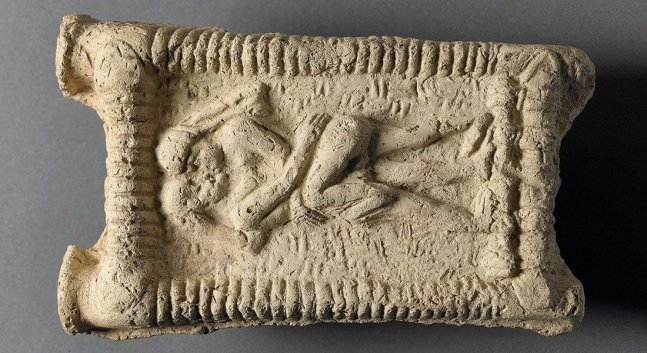Studies have shown that humans have been kissing as an expression of intimacy and sexual affection since at least 4,500 years ago. Danish and British scholars analyzed clay tablets written in Mesopotamia 2500 B.C.
A research team led by Professor Troels Arbøll of the University of Copenhagen in Denmark and Dr. Sophie Rasmussen of the University of Oxford in the UK published an article in the international journal Science on the 18th (local time), “Kissing is universal across various regions and cultures. It has been done.”
As a result of this study, the first record of sexual kissing is more than 1,000 years older than the conventional wisdom that the first record of kissing in a Bronze Age was from India around 1500 B.C.
The research team found a record of kissing based on a clay tablet from the ancient Mesopotamian civilization. A Mesopotamian clay tablet, dated to 2500 B.C., depicts a married woman who came close to her affair after kissing. Another clay tablet from the same period contains an oath by an unmarried woman to refrain from kissing and having sex with a man in the future.
The researchers found that in these Mesopotamian texts, not only married couples, but also unmarried people viewed kissing as part of their desire when in love.
Professor Arbol said, “Kissing is not a custom that originated and spread in one region, but has been practiced in many ancient cultures over thousands of years.”
 An ancient Babylonian clay tablet from about 1800 BC. It depicts kissing and sexual intercourse between a man and a woman while they are naked. Courtesy of the British Museum
An ancient Babylonian clay tablet from about 1800 BC. It depicts kissing and sexual intercourse between a man and a woman while they are naked. Courtesy of the British MuseumHowever, the researchers said that kissing, an act of love, also caused unintended consequences of spreading infectious diseases such as the herpes virus.
The researchers believed that herpes simplex virus type 1 (HSV-1) and parvovirus (B19), also known as herpes viruses, are mainly transmitted through saliva, so kissing may have spread the virus in ancient civilizations.
The researchers speculated that a disease called ‘Bushanu’, especially in ancient medical texts, was an infectious disease like HSV-1.
“Given the record that people with Bushanu develop blisters in or around the mouth, it can be seen as being infected with HSV-1,” said Professor Arbol.
The history of the kiss can be interpreted as having many independent origins in most cultures. In 2017, an analysis of the calculus of prehistoric Neanderthals revealed traces of ancient people sharing microorganisms through saliva exchange.
Kissing at this time was difficult to see as an act of exchanging emotions, but the possibility that kissing unintentionally accelerated the transmission of diseases for a long time in various cultures was also mentioned.
Source: Donga
Mark Jones is a world traveler and journalist for News Rebeat. With a curious mind and a love of adventure, Mark brings a unique perspective to the latest global events and provides in-depth and thought-provoking coverage of the world at large.